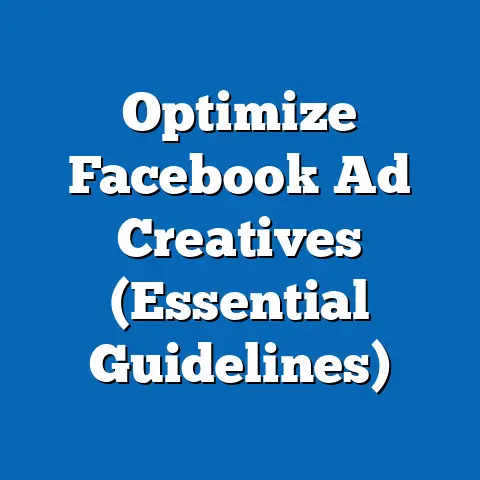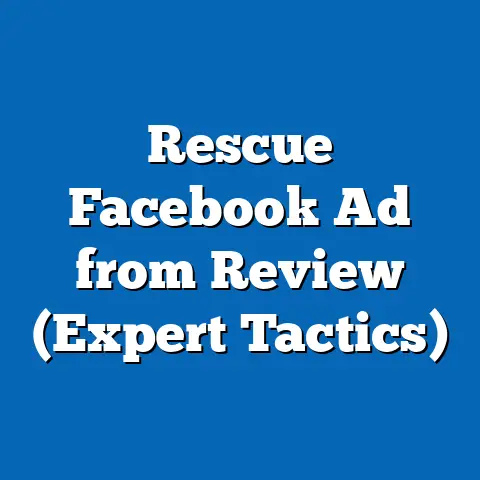Understanding Repeated HIV Ads on Facebook (Insightful Analysis)
Facebook, a giant in the social media landscape, has become more than just a place to connect with friends and family. It’s a powerful platform for advertising, and increasingly, a significant channel for public health communication. In this article, I’ll be diving deep into a specific and often-encountered phenomenon on Facebook: the repeated display of HIV awareness ads. These ads, designed to educate and inform, are a crucial part of public health initiatives. However, their effectiveness, ethical implications, and the mechanisms behind their delivery warrant a closer look. I aim to dissect how Facebook’s ad targeting works, explore the psychological impact of repeated exposure, and analyze the overall implications for public health. By understanding these elements, we can better appreciate the role of social media in shaping health behaviors and attitudes.
The Role of Facebook in Health Communication
Facebook’s journey from a simple social network to a pivotal player in health communication is nothing short of remarkable. With billions of active users worldwide, the platform offers unparalleled reach, making it an attractive avenue for disseminating health-related information. I remember when I first started noticing health campaigns on Facebook – it was a stark contrast to the usual product advertisements. It was clear then, and even more so now, that Facebook was becoming a key player in public health messaging.
Facebook’s User Demographics and Health Messaging
Facebook’s diverse user base presents both opportunities and challenges for health communicators. The platform caters to a wide range of demographics, spanning age groups, socioeconomic statuses, and cultural backgrounds. This diversity means that health messages can be tailored to specific audiences, increasing their relevance and impact. For instance, HIV prevention ads targeting young adults might focus on safe sex practices, while those aimed at older populations could address the importance of regular testing.
However, this same diversity also requires careful consideration of cultural sensitivities and potential biases. Health messages must be crafted in a way that resonates with diverse audiences without perpetuating stereotypes or causing offense. It’s a delicate balance, but one that’s crucial for effective health communication.
Facebook’s Advertising Tools for Public Health Campaigns
Facebook provides a suite of tools that enable advertisers, including public health organizations, to target specific demographics, interests, and behaviors. These tools allow for granular control over ad placement, ensuring that messages reach the intended audience. For example, an HIV awareness campaign could target individuals who have expressed interest in sexual health, LGBTQ+ issues, or related topics.
Furthermore, Facebook’s ad analytics provide valuable insights into campaign performance. Metrics such as reach, engagement, and click-through rates can be used to optimize ad creatives and targeting strategies, maximizing the impact of public health messaging. I’ve seen firsthand how these tools can be used to fine-tune campaigns and achieve remarkable results.
Advantages and Challenges of Using Facebook for Health Information
Using Facebook for health communication offers several advantages:
- Wide Reach: The platform’s vast user base allows for widespread dissemination of health information.
- Targeted Messaging: Facebook’s ad targeting tools enable precise targeting of specific demographics and interests.
- Interactive Engagement: Facebook allows for two-way communication, enabling users to ask questions, share experiences, and engage with health organizations.
- Cost-Effectiveness: Compared to traditional media channels, Facebook advertising can be a cost-effective way to reach large audiences.
However, there are also challenges:
- Misinformation: The spread of false or misleading health information on Facebook can undermine public health efforts.
- Privacy Concerns: The use of personal data for ad targeting raises privacy concerns, particularly in the context of sensitive health issues like HIV.
- Algorithm Bias: Facebook’s algorithms can inadvertently create filter bubbles, limiting exposure to diverse perspectives and reinforcing existing beliefs.
- Ad Fatigue: Repeated exposure to the same ads can lead to ad fatigue, reducing their effectiveness over time.
User Engagement with Health-Related Content on Facebook
Studies have shown that users are increasingly engaging with health-related content on Facebook. A 2023 study published in the Journal of Medical Internet Research found that over 60% of Facebook users have sought health information on the platform. The same study revealed that HIV awareness campaigns on Facebook had a significant impact on increasing knowledge about HIV prevention and testing among at-risk populations.
These statistics underscore the potential of Facebook as a tool for promoting public health. However, it’s important to note that engagement doesn’t necessarily translate into behavior change. Effective health communication requires not only reaching the target audience but also motivating them to take action.
Key Takeaway: Facebook’s role in health communication is significant, offering both unparalleled reach and targeted messaging capabilities. However, it’s crucial to address challenges like misinformation and privacy concerns to maximize the platform’s potential for promoting public health.
Understanding the Mechanisms of Ad Targeting
To understand why you might see the same HIV ad repeatedly on Facebook, it’s essential to understand the platform’s ad targeting mechanisms. Facebook’s ad algorithms are complex, constantly evolving, and designed to deliver the most relevant ads to each user. This process relies on a vast amount of data, which I’ve come to understand is both incredibly powerful and potentially problematic.
How Facebook’s Ad Targeting Algorithms Work
Facebook’s ad targeting algorithms use a variety of data points to determine which ads to show to which users. These data points include:
- Demographics: Age, gender, location, education, and other demographic information.
- Interests: Pages liked, groups joined, and other interests expressed on Facebook.
- Behaviors: Online activities, such as purchases, website visits, and app usage.
- Connections: Friends, family, and other connections on Facebook.
- Custom Audiences: Data uploaded by advertisers, such as email lists or customer databases.
These data points are fed into machine learning algorithms that predict the likelihood of a user engaging with a particular ad. The algorithms constantly learn and adapt based on user behavior, becoming more accurate over time.
Criteria Leading to Repeated Exposure of HIV Ads
Several criteria can lead to the repeated exposure of HIV ads to users:
- Demographic Targeting: If a user falls within a demographic group that is considered at-risk for HIV, they may be targeted with HIV awareness ads.
- Interest-Based Targeting: If a user has expressed interest in sexual health, LGBTQ+ issues, or related topics, they may be targeted with HIV ads.
- Behavioral Targeting: If a user has visited websites or used apps related to HIV prevention or treatment, they may be targeted with HIV ads.
- Retargeting: If a user has previously engaged with an HIV ad, they may be retargeted with the same ad or a similar ad.
- Frequency Capping: While Facebook allows advertisers to set frequency caps to limit the number of times a user sees an ad, these caps may not always be effective, particularly for high-priority campaigns.
I’ve noticed that even when frequency caps are in place, certain ads, especially those related to public health, seem to slip through the cracks. This is likely due to the importance placed on reaching specific at-risk populations.
Implications of Algorithm-Driven Advertising in Health Messages
Algorithm-driven advertising has significant implications for health messages:
- Increased Reach: Algorithms can help health messages reach a wider audience than traditional advertising methods.
- Improved Targeting: Algorithms can ensure that health messages are delivered to the most relevant users.
- Personalization: Algorithms can personalize health messages based on individual user characteristics.
- Potential for Bias: Algorithms can perpetuate existing biases, leading to unequal access to health information.
- Ethical Concerns: The use of personal data for ad targeting raises ethical concerns, particularly in the context of sensitive health issues like HIV.
It’s crucial for advertisers and social media platforms to be aware of these implications and take steps to mitigate potential risks. This includes implementing transparency measures, addressing algorithmic biases, and protecting user privacy.
Key Takeaway: Understanding Facebook’s ad targeting mechanisms is essential for comprehending why users are repeatedly exposed to HIV ads. While these algorithms can be effective in reaching target audiences, it’s crucial to address potential biases and ethical concerns.
The Psychology Behind Repeated Exposure
The effectiveness of repeated HIV ads on Facebook isn’t just about reaching the right audience; it’s also about understanding the psychology of repeated exposure. There’s a fascinating interplay between how our minds process information and how advertising leverages this to influence our attitudes and behaviors.
The Mere Exposure Effect
One of the key psychological principles at play is the mere exposure effect, which suggests that people tend to develop a preference for things simply because they are familiar with them. This effect has been studied extensively in various contexts, from music and art to faces and brands. In the context of advertising, the mere exposure effect implies that repeated exposure to an ad can increase its likeability and persuasiveness.
I’ve personally experienced the mere exposure effect when encountering new music. Initially, a song might not resonate with me, but after hearing it multiple times, I often find myself enjoying it. This same principle applies to advertising – the more we see an ad, the more likely we are to develop a positive association with the product or message.
Influencing Attitudes, Beliefs, and Behaviors Regarding HIV
Repeated exposure to HIV-related ads can influence attitudes, beliefs, and behaviors in several ways:
- Increased Awareness: Repeated ads can raise awareness about HIV prevention, testing, and treatment options.
- Reduced Stigma: By normalizing conversations about HIV, repeated ads can help reduce stigma and discrimination.
- Improved Knowledge: Repeated ads can educate people about HIV transmission, symptoms, and risk factors.
- Behavior Change: Repeated ads can motivate people to adopt safer sexual practices, get tested for HIV, and seek treatment if necessary.
However, it’s important to note that repeated exposure alone is not enough to guarantee behavior change. Effective health communication requires a multi-faceted approach that includes providing accurate information, addressing emotional barriers, and promoting social support.
Case Studies of Successful Public Health Campaigns on Facebook
Several public health campaigns on Facebook have successfully utilized repeated ad strategies to achieve their goals. For example, the “Start Talking. Stop HIV.” campaign, launched by the Centers for Disease Control and Prevention (CDC), used a series of repeated ads to encourage conversations about HIV prevention and testing among young adults. The campaign resulted in a significant increase in HIV testing rates among the target audience.
Another successful campaign, “Greater Than AIDS,” used repeated ads to dispel myths and misconceptions about HIV. The campaign featured real people living with HIV, sharing their stories and challenging stereotypes. The campaign helped reduce stigma and discrimination against people living with HIV.
These case studies demonstrate the potential of repeated ad strategies for promoting public health on Facebook. However, it’s crucial to carefully design and evaluate these campaigns to ensure that they are effective and ethical.
Key Takeaway: The psychology of repeated exposure plays a crucial role in the effectiveness of HIV ads on Facebook. By understanding principles like the mere exposure effect, advertisers can design campaigns that influence attitudes, beliefs, and behaviors regarding HIV prevention and treatment.
The Impact of Repeated HIV Ads on Target Audiences
The effectiveness of repeated HIV ads isn’t uniform across all audiences. Different groups react differently based on their age, cultural background, socioeconomic status, and pre-existing knowledge about HIV. Understanding these nuances is crucial for tailoring campaigns that resonate and drive meaningful change.
Key Target Audiences for HIV Ads on Facebook
Identifying key target audiences is the first step in creating effective HIV ads on Facebook. These audiences typically include:
- At-Risk Populations: This includes individuals who engage in behaviors that increase their risk of HIV infection, such as unprotected sex or sharing needles.
- Caregivers: This includes family members, friends, and healthcare providers who support people living with HIV.
- Healthcare Providers: This includes doctors, nurses, and other healthcare professionals who provide HIV prevention, testing, and treatment services.
- General Public: This includes individuals who may not be at high risk for HIV but can still benefit from increased awareness and education.
Differential Effects of Repeated Ads
Repeated ads can affect these groups differently:
- At-Risk Populations: Repeated ads can serve as a constant reminder of the importance of HIV prevention and testing. They can also provide information about available resources and services.
- Caregivers: Repeated ads can provide caregivers with information about HIV treatment and support services. They can also help reduce stigma and discrimination against people living with HIV.
- Healthcare Providers: Repeated ads can keep healthcare providers up-to-date on the latest HIV prevention and treatment guidelines. They can also promote the use of evidence-based interventions.
- General Public: Repeated ads can raise awareness about HIV and help reduce stigma and discrimination. They can also encourage people to support HIV prevention and treatment efforts.
However, it’s important to be mindful of potential negative effects. Repeated ads can be perceived as annoying or intrusive, particularly if they are not relevant to the user’s interests or needs. They can also reinforce negative stereotypes or contribute to ad fatigue.
Qualitative Data and Testimonials
To gain a deeper understanding of the impact of repeated HIV ads, it’s helpful to consider qualitative data and testimonials from individuals who have encountered these ads. These insights can provide valuable feedback on the effectiveness of ad creatives, targeting strategies, and overall messaging.
For example, a focus group study conducted by the Kaiser Family Foundation found that some individuals felt that repeated HIV ads were helpful in raising awareness and promoting testing. However, others felt that the ads were stigmatizing or insensitive. These findings highlight the importance of carefully crafting ad messages to avoid unintended consequences.
Key Takeaway: Repeated HIV ads can have a significant impact on target audiences, but it’s crucial to consider the differential effects of these ads on different groups. Qualitative data and testimonials can provide valuable insights into the effectiveness of ad campaigns and help identify areas for improvement.
Ethical Considerations and Public Health Implications
Using targeted ads for sensitive health issues like HIV raises a host of ethical considerations. It’s a delicate balance between raising awareness and potentially stigmatizing individuals. The responsibility of advertisers and social media platforms in safeguarding public health while promoting engagement cannot be overstated.
Ethical Implications of Targeted Ads for Sensitive Health Issues
Targeted ads for sensitive health issues like HIV raise several ethical concerns:
- Privacy: The use of personal data for ad targeting can raise privacy concerns, particularly if users are unaware that their data is being used for this purpose.
- Stigma: Targeted ads can inadvertently reinforce negative stereotypes or contribute to stigma against people living with HIV.
- Discrimination: Targeted ads can discriminate against certain groups, such as people living with HIV, by excluding them from certain opportunities or services.
- Manipulation: Targeted ads can be manipulative, particularly if they exploit users’ emotions or vulnerabilities.
It’s crucial for advertisers and social media platforms to address these ethical concerns by implementing transparency measures, protecting user privacy, and avoiding stigmatizing or discriminatory messaging.
Balancing Awareness and Potential Stigmatization
Designing ads that inform without alienating individuals requires careful consideration of language, imagery, and tone. Ads should focus on promoting prevention, testing, and treatment options while avoiding language that could be interpreted as judgmental or accusatory.
For example, instead of saying “You’re at risk for HIV if you have unprotected sex,” an ad could say “Protect yourself from HIV by using condoms every time you have sex.” This language is more empowering and less likely to be perceived as stigmatizing.
Responsibility of Advertisers and Social Media Platforms
Advertisers and social media platforms have a responsibility to safeguard public health while promoting engagement. This includes:
- Ensuring Accuracy: Advertisers should ensure that their ads are accurate and based on scientific evidence.
- Protecting Privacy: Social media platforms should protect user privacy by implementing strong data security measures and providing users with control over their data.
- Combating Misinformation: Social media platforms should actively combat the spread of false or misleading health information.
- Promoting Ethical Advertising Practices: Advertisers and social media platforms should adhere to ethical advertising practices, such as avoiding manipulative or discriminatory messaging.
By working together, advertisers and social media platforms can create a safe and informative online environment that promotes public health.
Key Takeaway: Ethical considerations are paramount when using targeted ads for sensitive health issues like HIV. Advertisers and social media platforms must prioritize user privacy, avoid stigmatizing messaging, and ensure the accuracy of their ads.
Conclusion
Throughout this analysis, I’ve explored the multifaceted nature of repeated HIV ads on Facebook. From understanding the platform’s ad targeting mechanisms to delving into the psychology of repeated exposure and addressing ethical considerations, it’s clear that this is a complex issue with significant implications for public health.
The key insights can be summarized as follows:
- Facebook plays a crucial role in health communication, offering unparalleled reach and targeted messaging capabilities.
- Understanding Facebook’s ad targeting mechanisms is essential for comprehending why users are repeatedly exposed to HIV ads.
- The psychology of repeated exposure plays a crucial role in the effectiveness of HIV ads.
- Repeated HIV ads can have a significant impact on target audiences, but it’s crucial to consider the differential effects of these ads on different groups.
- Ethical considerations are paramount when using targeted ads for sensitive health issues like HIV.
Looking ahead, Facebook and similar platforms have the potential to shape future public health strategies. By leveraging the power of social media, we can reach more people with accurate and timely health information, reduce stigma and discrimination, and promote healthier behaviors. However, it’s crucial to address the ethical challenges and potential risks associated with targeted advertising. Only then can we fully realize the potential of social media as a tool for promoting public health.






